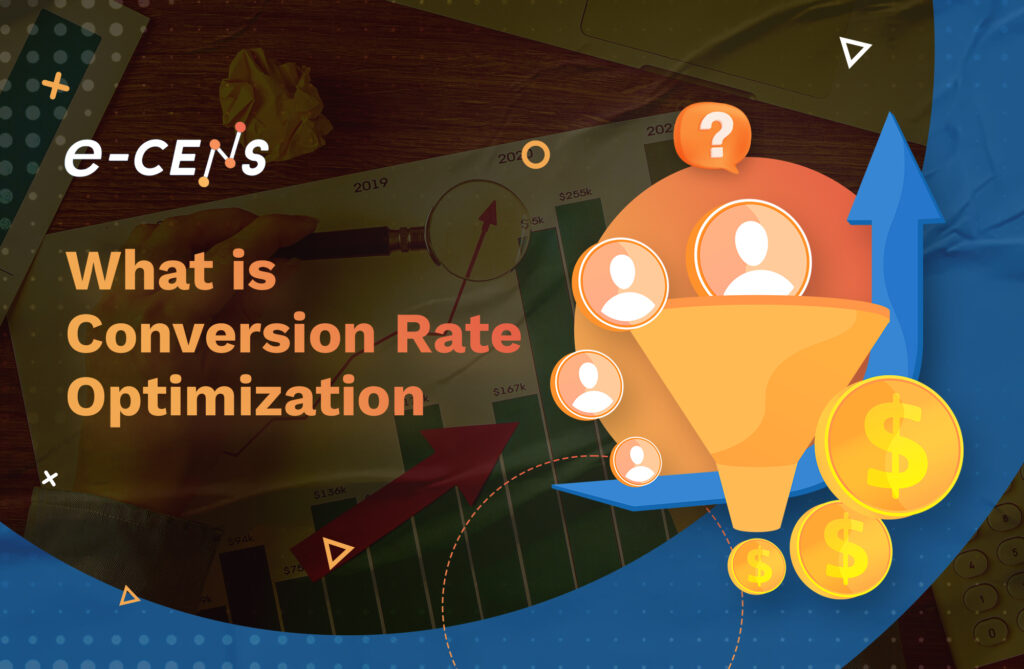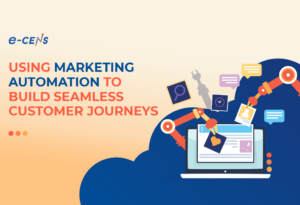
- What is Conversion Rate Optimization?
- How to calculate the conversion rate?
- How to determine a good conversion rate?
- What are the best CRO practices?
- Key Tools for Conversion Rate Optimization
- 5 Benefits of Conversion Rate Optimization
- The CRO Process Demystified
- Conclusion
- Frequently Asked Questions
- Q: What constitutes a good conversion rate in digital marketing?
- Q: What are some conversion rate optimization tools that can improve my website’s performance?
- Q: What are the best practices for conversion rate optimization
- Q: How do CRO tactics help optimize the user experience on a website?
- Q: How can I improve my landing page’s effectiveness to improve conversion?
- Q: How can I consistently improve my site’s conversion rate?
- Q: How do you measure conversion in CRO?
What is Conversion Rate Optimization?
Conversion rate optimization, or CRO for short, is the process that aims to increase the percentage of users or visitors taking a desired action on your website or mobile app, be it a signup, a free trial, or a purchase.
The thing about CRO is it isn’t a set-it-and-forget-it process. It’s an ongoing optimization game that you’ll have to find yourself having to go through.
Which is normal. Times change, user behavior changes, and you must keep up with the trends and how your customers view and interact with your website or brand.
Later on in this blog, we’ll go over the CRO process to give you a complete guide on what you should do and what the exact steps you’ll have to take to start doing CRO yourself.
But first, let’s figure out how you calculate a conversion rate.
How to calculate the conversion rate?

To calculate the conversion rate, you can use the following formula:
Conversion Rate = (Number of Conversions / Total Number of Visitors) * 100
You can use a fancy calculator if you’re not into manually doing the calculations yourself, but it’s straightforward, so we encourage you to do it yourself.
How to determine a good conversion rate?
There isn’t a standard global conversion rate for websites across different industries. Still, Invesp, one of our strategic partners, has done an excellent job calculating conversion rate averages for various industries using publicly published analytics.
According to their analysis, the average global conversion rate is 3.68%.
For e-commerce, the conversion rate was 1.64%, down from 1.65%, which is not a huge difference and is within the margin of error, which is a good thing because it shows that there haven’t been any significant changes or sways this year from last year.
But back to our question: what makes a good conversion rate in the first place? Well, it depends!
You need to analyze and see whether the conversion rates you’re achieving now are within a reasonable range of the industry average or your competition.
You won’t always have access to competition data, so the next closest thing would be a global conversion rate like Invesp calculated.
Do an A/A and A/B tests, see your benchmarks, and start strategizing your CRO strategies.
What are the best CRO practices?
The only thing we have to say about CRO best practices is that they’re a nice read, and you should know your basics from them, but other than that, they’re completely useless, even harmful in some areas.
CRO is all about user experience and achieving and improving your conversion goals, not about following random advice blindly and hoping that this would help you achieve a 100% increase in conversion rates.
Principles for successful conversion optimization
You must understand the basic principles of digital marketing and funnels, starting with understanding what your website visitor wants from you once he lands on your web page.
Let’s say you’re an e-commerce store. In that case, CRO for you means the process of increasing the percentage of visitors who make a purchase from your store.
And so you have to understand the funnel your customer goes through from when he lands to when he converts. Your best friends are Google Analytics and a user behavior tool like FigPii.
Once you analyze what your visitors do and where you could improve your funnel, you start building your hypothesis, which is the first step in the CRO plan.
Key Tools for Conversion Rate Optimization
When it comes to CRO, you usually have three sets of tools for gathering crucial insights and data for your strategy. Those three sets are:
Quantitative Research Tools
Quantitative tools provide numerical data and metrics to measure and analyze your website’s or marketing campaigns’ performance. These tools help you track and quantify user behavior, conversion rates, and other key metrics.
They provide insights into the quantitative aspects of your website’s performance, such as traffic sources, user demographics, page views, bounce rates, conversion rates, and more.
Examples of quantitative tools for Conversion Rate Optimization (CRO) include Google Analytics, Kissmetrics, Mixpanel, Crazy Egg, and FigPii.
Qualitative tools
Qualitative research tools aim to understand users’ subjective experiences, preferences, and motivations.
These tools provide insights into the qualitative aspects of user behavior and help you gather feedback and opinions directly from your target audience.
Testing and measurement tools for CRO
These tools are used to conduct experiments, A/B, A/A, and multivariant testing, and then they provide you with data based on the investigations they ran.
These tools help you optimize your website and marketing campaigns by testing elements, layouts, messaging, and user experiences to identify the most effective strategies. Here are some popular testing and measurement tools for CRO:
Optimizely
VWO (Visual Website Optimizer)
FigPii
Convert.com
Adobe Target
5 Benefits of Conversion Rate Optimization
CRO offers a wide range of benefits, from increasing your revenue to building a better brand, which doesn’t seem like something that CRO would contribute to, but hear me out.
1. Increased conversion rates
The most apparent benefit that CRO brings is improving conversion rates.
That’s why you do CRO in the first place: to increase your conversion rate and drive bottom-line numbers, be it revenue, leads, free trials, etc. But you also have things like:
2. Better user experience
CRO gives visitors and customers the best experience to make their road to taking action and converting as frictionless as possible.
Doing that improves your customer experience because customers hate going through hoops to achieve a goal.
And those improvements are based on insights, which takes us to the benefit.
3. Data-driven decision making
When you make a change, that change is based on an experiment that puts two web page versions against each other to see which ones drive more conversions; the winner gets deployed to everyone.
This is exactly what data-driven decision-making means. Those decisions are based on concrete data that has been tested and proven successful.
4. Long-term impact
CRO is not a one-time effort but an ongoing process. By continuously monitoring and optimizing the website, businesses can sustain the benefits of increased conversion rates in the long run.
5. Gaining valuable user insights and building customer trust
User surveys and heatmaps provide valuable insights into customer preferences, pain points, and motivations. As a result, marketing campaigns and product offerings can be tailored to meet customers’ needs more effectively.
The CRO Process Demystified
CRO is not a thing you can assign to your junior digital marketer and have him work on it. I’ve seen CRO first-hand and the amount of work behind the scenes, so I know how the website conversion optimization process happens.
From working with CRO specialists to designers to developers to CRO tools, the process is not a one-man-army process, so without ado, let’s dive into what is a CRO process.
From research to optimization, testing, and adjustments
When doing CRO, the first thing you need to start with is putting everything into a document that you can use later on as a point of reference, and it all start with the simple question: what do I want to achieve?
Identify a Goal
The first thing you need to do is to identify and write your goals clearly. What is it that at the end of your research, you will count as an uplift in conversions when it increases?
Let’s say you’re an e-commerce store looking for more purchases, so is your goal for more people to buy from you? Or to increase the cart size for people who buy usually?
You see, each goal of those would lead to different lines of experimentation and work, so you definitely need to have your goals as clear as possible.
Evaluation and Analysis
Now that you have defined your goals and know exactly what you want to achieve, you’ll need to do some analysis, starting with the website.
You need to know the current state of your website, what the traffic is like, the baseline conversion rate it has, what the user experience is like etc.
Then you do a qualitative data where you gather all the numbers to have them on hand for reference, things like:
- User feedback and reviews
- Surveys and interviews with website visitors
- Heatmaps and click tracking data
- User session recordings
- Usability testing observations
- Customer support interactions and feedback
As for quantitative data, you can track things like
- Conversion rates (e.g., sign-ups, purchases, downloads)
- Traffic sources and referral data
- Bounce rates and exit rates
- Average session duration
- Page load times
- Click-through rates (CTR)
- Revenue per visitor
- A/B testing results and statistical significance
Now that we’ve thoroughly answered the question of what we want to achieve and collected all the data needed to start building our hypothesis on what we should do to increase website conversion rate, we start doing the optimizations and testing them out.
Optimizations
In this step, a CRO conducts a thorough website audit, analyzing the website’s design, user experience, navigation, and functionality to identify improvement areas.
Understanding user behavior is crucial. CRO specialists conduct user testing, such as usability tests and user surveys, to gain insights into how visitors interact with the website. This helps identify pain points and areas for improvement.
Then comes the testing.
You’ll need a developer for that part because A/B tests are usually designed by CROs and designers but implemented by developers using an A/B testing platform like FigPii.
You can run A/A tests, A/B tests, or multivariate tests depending on what you need to achieve, although A/B tests are the most common tests in CRO.
Once a CRO test runs, it usually concludes by declaring a winner, and that variant gets deployed to everyone.
Adjustments
CRO never ends; it’s a continuously ongoing process, so you’ll find yourself adjusting your tests and optimizations further and further to increase your website’s conversion rate.
Conclusion
This blog is your front door into the world of CRO. After finishing it, you should know the basics of CRO and what you need to improve your conversion rate.
One of the resources we could recommend for you is our partner’s blog, where they talk just about CRO and the different related topics.
Our consultants are here to help you build the right data analytics framework for your needs: contact e-Cens today to learn more.
Frequently Asked Questions
Q: What constitutes a good conversion rate in digital marketing?
A: Well, it depends on the industry, the business model, and the goals of your strategy. However, an average conversion rate of around 2% to 5% is typically considered good.
A reasonable conversion rate constantly improves the current rates, so keep testing.
Q: What are some conversion rate optimization tools that can improve my website’s performance?
A tool without a plan can’t help you. You need to do a website audit to analyze your site’s performance and identify areas for improvement. You can do that using the tools we discussed earlier in the blog with qualitative and quantitative tools.
Here are some of the tools you’ll find helpful in analyzing and deploying tests: Google Analytics, Optimizely, and FigPii.
Q: What are the best practices for conversion rate optimization
A: If you read the blog, then you know where we stand from best practices, but some best practices are genuinely helpful, like:
- Analyzing your conversion funnel
- Understanding your audience
- Implementing changes based on data-driven insights
- Continuously testing and adjusting your strategies.
Q: How do CRO tactics help optimize the user experience on a website?
A: CRO, as we said in the blog, is all about analyzing user behavior and then making the user experience a delight, so when doing CRO for your website, you automatically improve the user experience and your conversion rates.
Q: How can I improve my landing page’s effectiveness to improve conversion?
A: To improve the effectiveness of your landing page, focus on aspects like site speed, mobile optimization, intuitive navigation, compelling calls-to-action, and user-centric content. By optimizing these elements, you can significantly enhance your conversion rate.
Q: How can I consistently improve my site’s conversion rate?
A: Consistent improvement in your site’s conversion rate can be achieved through regular testing and iteration of your strategies. Use A/B testing to try different versions of your website elements like headlines, calls to action, images, etc. Also, staying updated on CRO tactics and best practices can help you continually optimize your site for conversions.
Q: How do you measure conversion in CRO?
A: In CRO, conversion is most often measured as a percentage. The conversion rate is calculated by dividing the number of conversions by the total number of visitors to a webpage and multiplying the result by 100.




